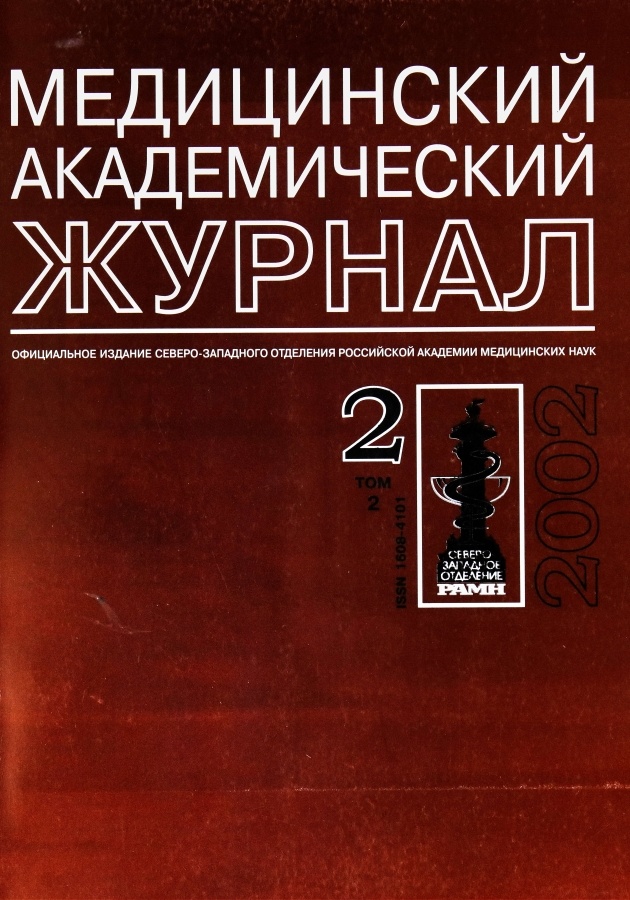Correlations of immunological and immunogenetic parameters in different types of systemic lupus erythematosus course
- Authors: Glazanova Т.V.1,2, Bubnova L.N.1,2, Mazurov V.I.1,2
-
Affiliations:
- Russian Research Institute of Hematology and Transfusiology
- Medical Academy of Postgraduate Education
- Issue: Vol 2, No 1 (2002)
- Pages: 47-51
- Section: Clinical medicine
- Published: 21.02.2002
- URL: https://journals.eco-vector.com/MAJ/article/view/693964
- ID: 693964
Cite item
Abstract
In 32 patients with systemic lupus erythematosus (SLE), 19 of whom had chronic course of the disease and 13 had subacute course, we have studied the parameters of cell immunity (percent level of main lymphoid subsets), humoral immunity (serum level of IgG, IgA and IgM, circulating immune complexes), the capacity of peripheral immunocompetent cells to produce a number of cytokines (IL-1 p, IL-6, IL-10, TNFa). Also in these patients HLA II class molecular typing (DRB1, DQB1 and DQA1 loci) was performed using PCR-SSP method. The comparative analysis of data obtained in both groups revealed that the patients with chronic SLE course show an increased percent level of activated cells (DR+, CD25+) and serum IgA, as compared to those with subacute course. And the latter ones have an increased level of T-cytotoxic cells (CD8+). Also, we have established a marked difference in the frequency of such important immunogenetic markers of autoimmune diseases as HLA-DRB1 *03 and allelic combination HLA-DRB1 *03, DQB1* 0201, DQA1* 0501, which have been observed statistically more frequently in patients with subacute course of SLE, as compared to those with chronic course.
About the authors
Т. V. Glazanova
Russian Research Institute of Hematology and Transfusiology; Medical Academy of Postgraduate Education
Author for correspondence.
Email: shabanov@mail.rcom.ru
Russian Federation, St. Petersburg; St. Petersburg
L. N. Bubnova
Russian Research Institute of Hematology and Transfusiology; Medical Academy of Postgraduate Education
Email: shabanov@mail.rcom.ru
Russian Federation, St. Petersburg; St. Petersburg
V. I. Mazurov
Russian Research Institute of Hematology and Transfusiology; Medical Academy of Postgraduate Education
Email: shabanov@mail.rcom.ru
член-корреспондент РАМН
Russian Federation, St. Petersburg; St. PetersburgReferences
- Насонова В. А. Руководство по внутренним болезням. Ревматические болезни. М: Медицина, 1997.
- Фрейдлин И. С. Иммунная система и ее дефекты. СПб.: НТФФ «Полисан», 1998.
- Хаитов В М., Пинегин Б. В., Истамов X. И. Экологическая иммунология. М.: ВНИРО, 1995.
- Candore G., Cigna D., Todaro M. et al. T-cell activation in HLA-B8, DR3-positive individuals. Early antigen expression defect in vitro // Hum. Immunol. 1995. Vol. 42. № 4. P. 289-294.
- Charron D. HL A genetic diversity of HL A: functional and medical implications. Paris: EDK, 1997.
- Hartung K, Baur M., Coldewey R. et al. MHC haplotypes and complement C4 alleles in SLE // J. Clin. Invest. 1992. Vol. 90. P. 1346—1351.
- Marinichev L., Naumova E., Rashkov R. et al. HLA class II alleles and autoantibodies in Bulgarians with SLE // Tissue Antigens. 1995. Vol. 46. № 5. P. 422-425.
- Reveille J., Anderson K., Schrohenloher R. et al. Restriction fragment length polymorphism analysis of HLA-DR, DQ and C4 alleles in Caucasians with SLE // J. Rheumatol. 1991. Vol. 18. P. 14-18.
- So A., Fielder A., Warner C. DNA polymorphism of MHC class II and class III genes in SLE // Tissue Antigens. 1990. Vol. 35. P. 144-147.
- Vargas-Alarcon G., Salgado N, Granados J. et al. Class II allele and haplotype frequencies in Mexican SLE patients // Hum. Immunol. 2001. Vol. 62. № 8. P. 814-820.
Supplementary files






